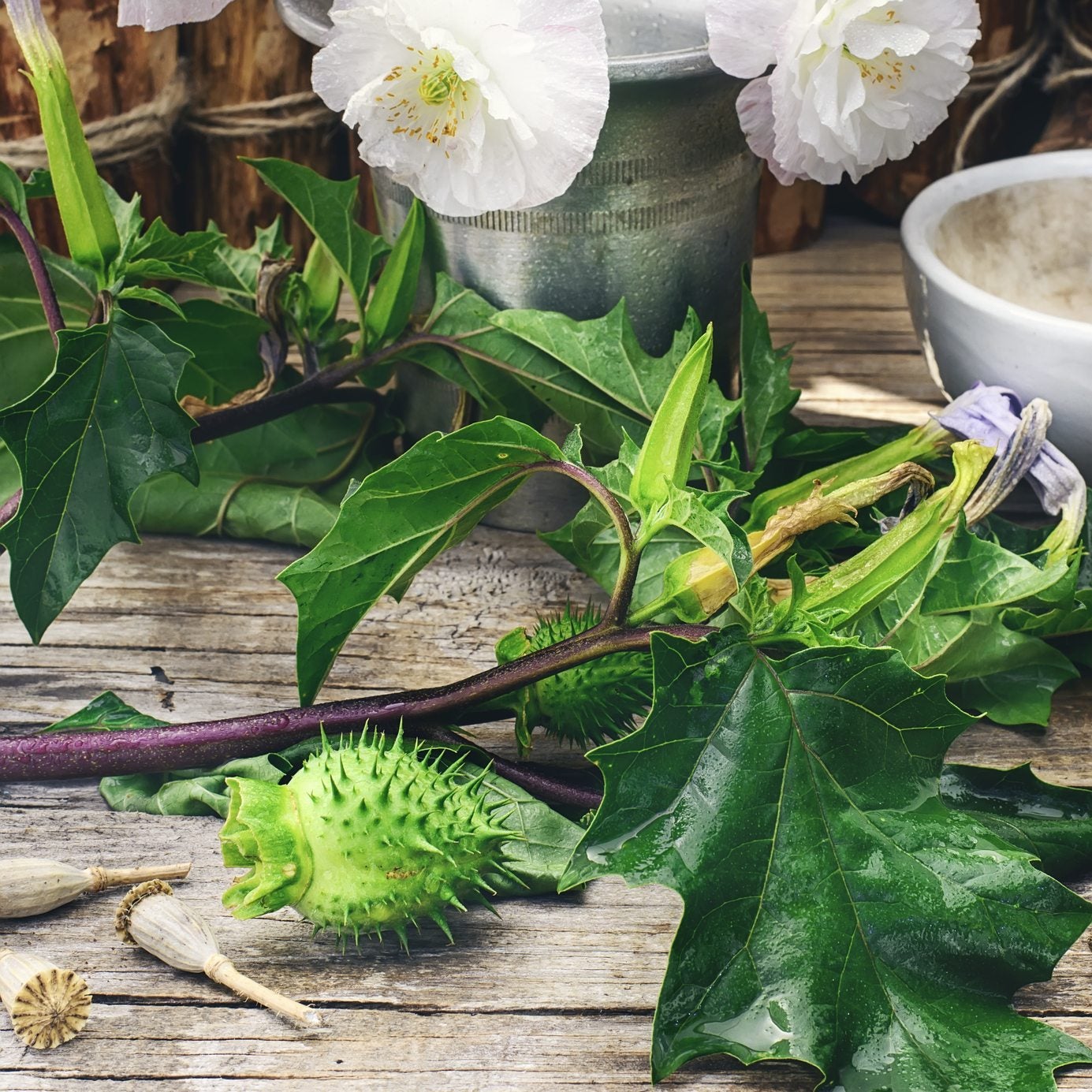Plants For A Poison Garden: Tips For Creating A Poison Garden


If you’ve read my book The Garden Crypt, then you know all about my fondness towards unusual things in the garden. Well, creating a poison garden is something that’s right up my alley. Before some of you get alarmed, let me make one thing clear – this type of garden is NOT to be used for malicious purposes and by all means, if you have pets or small children, DO NOT attempt to grow a toxic plant garden! With that said, those who are interested in this unique garden space, read on to learn more.
How to Create a Poison Garden
Creating a poison garden need not be so morbidly named or crafted. Make it your own, like you would for a recipe. Put your favorite “toxic” herbs in a corner of the landscape… fenced off from other more traditional plants. Showcase old-world specimens with a long history surrounded in lore. Choose commonly seen plants once found in a witch’s garden. Likewise, you might want to stick with everyday toxic garden plants. Yes, there are more than you might think. In fact, many commonly grown plants are actually poisonous in some fashion. As with any garden design, there are certain to be various ways to create a toxic plant garden, and this is what makes gardening so fun. No one garden is exactly the same. Feel free to put your own spin on it, but just to keep things safe, it never hurts to heed a few helpful tips along the way. So as you're creating a poison garden in your landscape, you may want to take these ideas into consideration:
- Keep the area separate. These gardens aren’t the friendliest so it’s a good idea to locate yours out of the way from other friendlier areas. For instance, the backyard or somewhere off to the side and out of sight from others is a good starting place. Even better, you may want to fence off your toxic plant garden, not only to keep the area more obscure but to help keep others out.
- Do your homework. This means research the plants for a poison garden prior to planting. You want to know not only how to care for them appropriately, but you also want to choose plants that are suitable to and will thrive in your growing space. They should be compatible with other plants in the garden as well. You may even want to choose a particular theme for your poison garden plants, like dark plants, be it those that are dark in color or plants with a dark past. Maybe you’d rather have something a little more uplifting, preferring to stick with common garden plants that are toxic in nature. Regardless, learn more before adding these to the garden.
- Be responsible. This should be obvious, but if you have a hidden agenda in mind when thinking about planting a poison garden, stop now. This should only be meant as a fun, yet different, type of garden space and not one that is menacing or aims at harming others… or even yourself. And please handle all of these toxic garden plants with extreme care, wearing gloves when planting or maintaining the garden.
- Keep it safe. Since you want to keep this area as safe as possible, install signs around the garden or on the fence itself (should you have one) so that others will know this is not an area meant for exploration. It can also add to its overall ominous effect with things like DO NOT ENTER, KEEP OUT, PRIVATE PROPERTY, WRONG WAY, etc. Also, be sure to label the plants as toxic, including each one so you don't forget what plant is what.
Plants for a Poison Garden
Now that you have a few ideas to help get you started, it’s time to choose some plants for the poison garden theme. Since, in reality, it could be argued that most plants in some way or other have toxic properties, it would be impossible to name them all. Even the plants we do have listed below are poisonous in varying levels and in different ways. Some may be toxic if you ingest the leaves, while others are toxic if you eat the roots. Some may simply make you very sick if you eat the poinsonous parts while others can cause death. None of the plants we have listed are deadly poisonous simply by touch, though a few can leave a nasty rash if you touch the leaves or sap with your bare skin. That being said, here are some toxic garden plants that will fit right in, some well-known and others with an interesting history:
- Autumn crocus
- Azalea
- Black walnut
- Bloodroot
- Bouncing bet
- Brugmansia
- Buttercups
- Caladium
- Castor bean plant
- Corn cockle
- Daffodil
- Daphne
- Datura
- Deadly nightshade
- Delphinium
- Elderberry
- Elephant ear
- Foxglove
- Gloriosa lily
- Hellebore
- Henbane
- Horse chestnut
- Hyacinth
- Hydrangea
- Jack-in-the-pulpit
- Jimsonweed
- Lantana berries
- Larkspur
- Lily of the valley
- Lupine
- Mandrake
- Mistletoe
- Monkshood
- Nicotiana
- Oleander
- Poison hemlock
- Pokeweed
- Rhododendron
- Rhubarb leaves
- Sago palm
- St. John’s wort
- Wormwood
- Yew
Disclaimer: The contents of this article is for educational and gardening purposes only. Before adding any of these plants to a garden, research them carefully and ALWAYS handle toxic plants appropriately. NEVER plant these in areas frequented by animals or children.
Sign up for the Gardening Know How newsletter today and receive a free copy of our e-book "How to Grow Delicious Tomatoes".

Nikki Tilley has been gardening for nearly three decades. The former Senior Editor and Archivist of Gardening Know How, Nikki has also authored six gardening books.